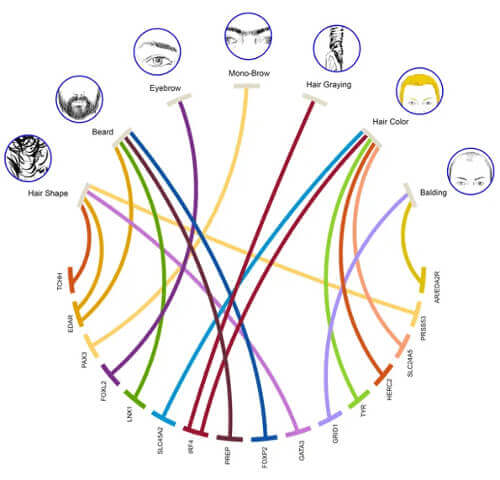Please note that the original version of this post on CRISPR babies Lulu and Nana was written in 2018. It can be read below this update. Also see the wiki on the “He Jiankui Affair“. Our interest in CRISPR gene editing is focused on its potential use to cure hair loss.
Update: February 5, 2023 — Scientist who edited babies’ genes says he acted too quickly. And his ghost is still haunting geneticists at conferences.
Update: February 1, 2023
Dr. He Jiankui is out of Prison
Dr. He Jiankui joined Twitter a few months ago after coming out of prison. He just gave an encouraging update on Lulu and Nana that I have embedded below. I hope this is not a fake account! So far, it sounds legitimate. Mr. Jiankui wants to resume experimenting in the lab.
Also, whatever happened to Scott (see bottom half of this post)?
— Happy New Year from Jiankui’s family.
November 26, 2018
Lulu and Nana
Huge news from China, where scientists claim to have used CRISPR/Cas9 to genetically modify human babies for the first time in history. The two female babies are named Lulu and Nana. Not sure what to think about the ethics of all this as yet, but I like what Dr. Jiankui He has to say about genes not defining you:
“Our DNA does not predetermine our purpose or what we could achieve. We flourish from our own hard work, nutrition, and support from society and our loved ones. Whatever our genes may be, we are equal in dignity and potential.”
In this particular case, the volunteer fathers all have HIV and they want to make sure that their progeny do not suffer from the terrible disease of AIDS. One article on this tory is titled: Chinese scientists are creating CRISPR babies. The scientists plan is to eliminate a gene called CCR5, so as to ensure that the human offspring are then resistant to HIV (as well as smallpox and cholera).
Note that some media reports are placing doubt on the accuracy of these claims and the methodology used.
Update: Dr. George Church seems to think that this is for real:
“I have been in contact with the Shenzhen team and have seen the data. The sequencing assays used are generally unambiguous, especially when done in multiple cell types at different developmental stages and in two children. Is the genie really out of the bottle? Yes.”
First Gene Edited Babies Claimed in China
The below video (and associated story) from the He Lab’s YouTube channel has caused much global controversy.
November 24, 2018
Scott Tries a New Hair System
I was thinking of adding Scott’s latest video about his new hair system to my original lengthy post on his hair system. However, there are already three other videos on there, including a before one. So I am adding it below. I like this hair system better than the first one.
